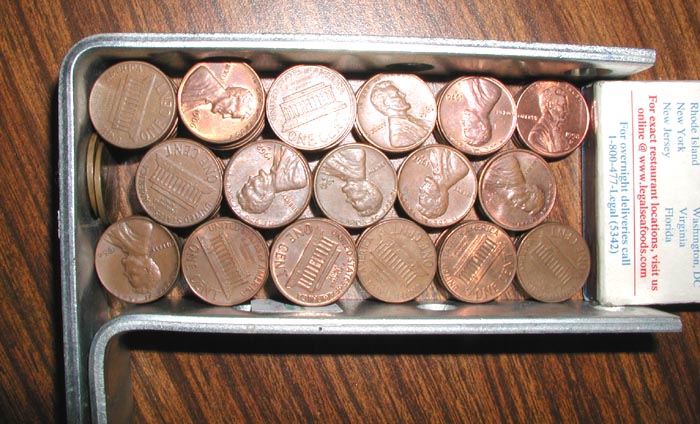|
|
|
alt-usage-english.org |
| Home |
| Newsgroup |
| Intro Documents A B C D E F G |
| FAQ |
| FAQ Supplement |
| ASCII IPA |
| Audio Archive |
| Links |
| UCLE Corner |
| What's New? |
| Search |
| Site Map Where am I? |
| Contact |
|
|
Proof of the PuddingAn Account of Certain Nusmismatic Research Activities
|
MaterialsThe following materials were assembled for this experiment:
MethodologyThe two metal "L" brackets were first tested for conformance to a 90 degree angle.All experiments were conducted at room temperature, pressure, and humidity. Then the brackets were nested to form three adjustable walls of a rectangle. Together with a suitably sized matchbox to serve as the fourth wall, this created a parallelepiped volume which was filled with stacks of pennies. These stacks were created to a sufficient height to comfortably exceed half the diameter of a penny. The penny stacks were arranged in serried ranks, and an attempt was made to see if two more pennies could be slipped in edgewise at the end of one of the shorter ranks. See Fig 1.

Fig 1
Then the two-hundred pennies were removed from their wrappers and arranged in the aforementioned valley in a long stack. It was observed that there was some number of pennies in excess necessary to span the desired 12 inches. This number was determined to be a non-zero positive integer less than two. From this it was calculated that there were 199 pennies in the column. See Figure 2.

Fig 2
For those with a fast Internet connection and who wish to avail themselves |